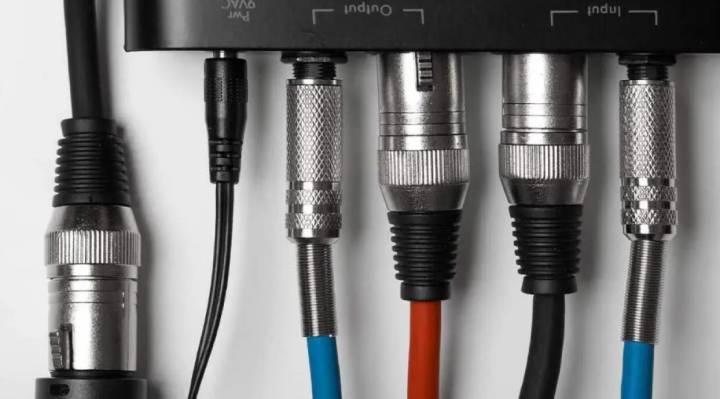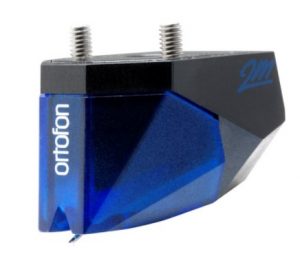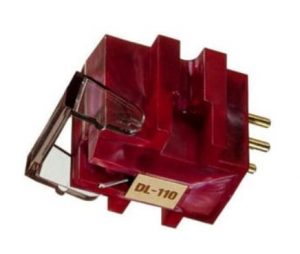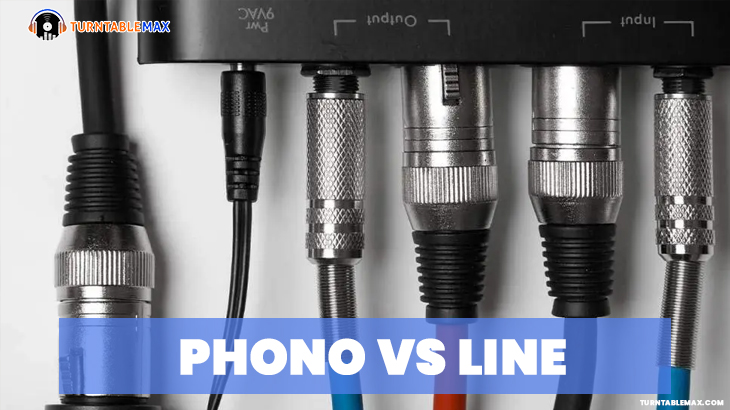If you are new to turntables, you should be aware of a few basic things. Knowing the difference between phono vs line signals is one of the basic things.

What is phono vs line signal? Why can’t I connect PHONO signals directly to a speaker? How to Convert PHONO Signal to LINE signal? These are some of the common questions that will arise for a beginner.
So, In this article, we will answer all the questions mentioned above and everything else you need to know about the PHONO vs LINE signal.
DIFFERENCE BETWEEN PHONO VS LINE
A PHONO signal from the high-end turntable cartridge is much weaker than the standard LINE signal. Secondly, the lower tones (bass) of PHONO signals are significantly reduced (RIAA equalized), while this is not the case for a LINE signal.
If you connect a PHONO output directly to a LINE input of receivers, or speakers, you will get a distorted sound output with no bass. This is because of the low level and the reduced bass of the PHONO signal. The two main differences between PHONO and LINE are,
- SIGNAL LEVEL / SIGNAL STRENGTH
Take a few seconds to turn off your entire HiFi system while leaving only the turntable running. As you bring your ear closer to the phono cartridge, you should hear the music on the record quietly. Well, what you hear is the Phono output signal from the cell. This is much weaker and equalized much differently from the Line level signal commonly supported by amplifiers (not phono).
LINE signal is a standard signal strength level that is used to connect CD players, DVD players, records players, etc., to amplifiers and receivers with turntable compatibility. Turntable cartridges produce low-level output signals that need amplification. A typical home stereo system comes integrated with an amp or receiver with a phono input port.
Therefore, the role of the phono preamplifier is to transform the particular phono signal from the cell into an electrical LINE signal that can be processed by your amp then played by your speakers. This input passes the signal through a phono preamp, which applies RIAA equalization to the signal and boosts it to line level.
If neither your HiFi system nor your vinyl turntable includes a phono preamplifier, then you need to get a separate one. A phono preamp can also be an accessory to improve the sound quality of your system.
- RIAA EQUALIZATION
The phono preamplifier is used to apply the correction curve or RIAA equalization. This curve, which was standardized in the 1950s by the Recording Industry Association of America (RIAA), has been used for almost all vinyl recordings ever since. Its purpose is to overcome the physical limits of the LP record.
So that large bass ripples and small treble ripples can more easily fit in the groove of a vinyl record without stepping on each other’s feet or interfering. And attenuate the bass and increase the treble during the engraving. When playing, the phono preamplifier restores the balance between bass and treble frequencies by performing an inverse correction.
So a LINE signal has a flat frequency curve while a PHONO signal has reduced bass and boosted treble.
WHY DO TURNTABLES NEED PHONO PREAMP
The main function of a phono preamp is to grow, magnify (amplify what) and correct the signal sent by the source to which it is attached. In our case, the vinyl turntable is the source. Standalone phono preamp provides usually better sound quality than the in-built preamp.
The cartridge is the main component responsible for the creation of phono signals. The diamond/needle read the record grooves, which are then converted into electrical signals (phono signals) by the magnetic coil in the cartridge. This low-level electrical signal is then fed into the phono preamplifiers. Once the signal is amplified, it can be transmitted to the amplifier, which will send it to the speakers so that we can hear it. A phono preamplifier can also be used to adjust the input impedance or adjust the tone of the audio signal.
Many turntables are integrated with phono preamp. If your turntable doesn’t have an in-built phono preamp, you have to get a standalone phono preamp.

TYPES OF CARTRIDGE:
1. MOVING MAGNET (MM)
The mobile magnet cells are the interchangeable Stylus. This cartridge has two magnets (for stereo playback) attached directly to the tip holder (the CANTILEVER). And it oscillates between two reels, depending on the movements directly undergone by the diamond in the groove of the vinyl. These movements create a modulation, so an audio signal.
The advantage of this technology is that the moving part is very light and is replaceable. The output level is high, between 2.2mV and 6mV, and thus easy to amplify. These cells are efficient and offered at very reasonable prices because they are relatively easy to manufacture.
Pros:
- High sensitivity, high output level
- Easy stylus change
- Robustness
- Affordable price
Cons:
- More or less regular response
- High distortion

2. MOVING COIL (MC)
Unlike the MM, the two coils are fixed on the cantilever, and they oscillate to create the modulated signal. The internal architecture does not allow the Stylus to be changed because it is integral to the cell.
To reduce the weight of the moving elements, the number of turns of the coils is limited, which gives a relatively weak output signal between 0.25 mV and 0.55 mV. Some manufacturers have “boosted” the magnetic field of their Moving Coils: this is called the High-Level MCs. Their output level is between 0.80 mV and 3.3 mV.
The Phono output signals of the MC cartridge are comparatively weaker than the Phono output signals of the MM cartridge. Hence MC cartridge signals need more gain (amplification) than MM cartridge signals to reach the standard LINE signal level.
To fix this, most of the preamps and phono stages are provided with an MC/MM switch. When you set the switch to MC, your turntable’s inbuilt phono stage will increase the signal strength more than the signal strength offered when it is set to MM.
So, when you buy a standalone preamp, make sure to check whether it is compatible with both types of cartridges.
Pros:
- Very low distortion rate
- Excellent transient response
- Very good dynamic
- Very good tonal balance
- Smooth sound reproduction
Cons:
- Low output level, requires a preamp or transformer (except certain references)
- No possibility to change the tip
- High price
CONCLUSION
Now, you know as much as we do about phono vs line signals. Remember, preamps are devices that help you to amplify the phono output level to the standard LINE signal strength. This is done so that it can be connected to amp/receiver and then to loudspeakers. I hope this basic introduction will allow you to fully enjoy your audio equipment and your turntable!


